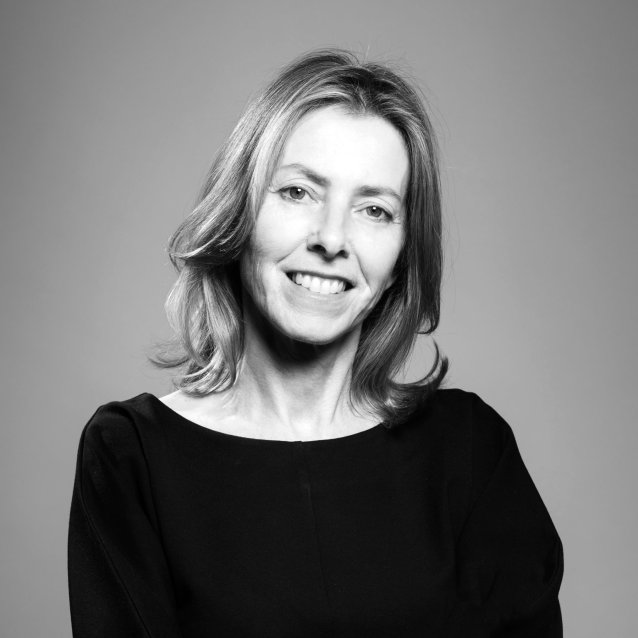
Andrew Sayers AM
Director from 1998 to 2010
Andrew Sayers AM (1957–2015) was inaugural Director of the National Portrait Gallery and served from 1998 to 2010. While committed to the development of the NPG as a centre for biography and history, Sayers signalled his exciting vision for the institution with The Possibilities of Portraiture (1999), comprising a mixture of historical and contemporary works in various media. Over eleven years, during which the staff of the institution increased fivefold, he conceived or worked in partnership to create the exhibitions Arthur Boyd Portraits (1999-2000); Heads of the People (2000); Nolan Heads (2001); Intimate Portraits (2002); Contemporary Australian Portraits (2002-2003); POL: Portrait of a generation (2003); To Look Within: Self-portraits in Australia (2004); The World of Thea Proctor (2005); Clifton Pugh Australians (2005-2006) and Open Air: Portraits in the landscape (2008). From 2003 onward, he argued for a dedicated building for the National Portrait Gallery which opened at the end of 2008. In 2010 he was appointed Director of the National Museum of Australia.

Louise Doyle
Director from 2010 to 2014
Louise Doyle was appointed Director of the National Portrait Gallery in 2010 after joining the Gallery as Assistant Director, Programs and Collections in 2007. She led the gallery through a period of growth and change as it settled into the new award-winning building. Significant commissions during Louise’s tenure include the public sculpture Geo Face Distributer by James Angus (2009) located at the Gallery’s entrance, and the video portrait of singer/songwriter Paul Kelly by Warwick Thornton (2013). Major exhibitions presented under her direction included Richard Avedon: People, curated in liaison with the Richard Avedon Foundation, New York (2013); Beyond the Self: Contemporary Portraiture from Asia (2011); Elegance in Exile: Portrait Drawings from Colonial Australia (2012) and Go Figure: Contemporary Chinese Portraiture (2012). Louise oversaw the presentation of the Queen’s Diamond Jubilee portrait – The Coronation Theatre, Westminster Abbey: A Portrait of Her Majesty Queen Elizabeth II by Australian artist Ralph Heimans in September 2012. Louise commenced as Assistant Director-General Access and Public Engagement at the National Archives of Australia in 2013.

Angus Trumble
Director from 2014 to 2018
Angus Trumble (1964–2022) was Director of the National Portrait Gallery from February 2014 to December 2018. During his tenure the Gallery reached many significant milestones including the establishment of the Foundation and the 20th anniversary celebrations culminating in the ambitious 20/20 exhibition. A dynamic and highly regarded leader, he oversaw the growth of the collection, ensuring the Gallery’s acquisition of major works including Graham Sutherland’s Helena Rubinstein in a red brocade Balenciaga gown (1957) and the painting of legendary navigator William Bligh (c. 1776), attributed to John Webber. Under his direction, the Gallery presented exhibitions such as In the Flesh (2014-2015), So Fine: Contemporary women artists make Australian history (2018), The Popular Pet Show (2016-2017), Dempsey’s People: A folio of British street portraits 1824–1844 (2017) and Starstruck: Australian movie portraits (2018). Angus was a Senior Research Fellow in Australian History at the National Museum of Australia from 2019 until 2022.

Karen Quinlan AM
Director from 2018 to 2022
Karen Quinlan AM was Director of the National Portrait Gallery from December 2018 to September 2022. She was formerly director of Bendigo Art Gallery for 18 years, and Professor of Practice at the La Trobe Art Institute at Bendigo. Karen steered the Gallery through a dynamic period that included building major rectification works and a global pandemic. Under her leadership, the international exhibition Shakespeare to Winehouse from the National Portrait Gallery, London (2022) was the most successful ticketed exhibition ever staged at the Gallery. She oversaw the launch of the new Darling Portrait Prize for painting. Karen drove the Gallery’s first major collaborative exhibition with the National Gallery of Victoria, WHO ARE YOU: Australian Portraiture (2022). New online and exhibition programs developed during the pandemic meant more people than ever could access the Gallery’s programs and collection, significantly increasing the Portrait Gallery’s national profile. In October 2022 she commenced as Chief Executive Officer of Arts Centre Melbourne.













